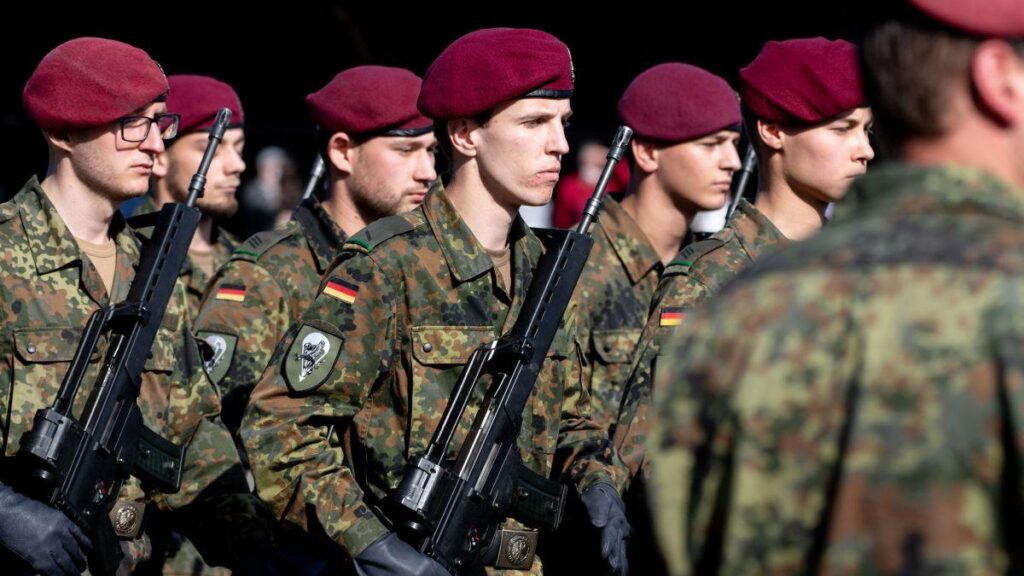In an era where satellites have become indispensable tools for global communications, navigation, and military operations, European militaries are scrambling to elevate their space capabilities to keep pace with the growing traffic in orbit. The increasingly crowded space environment has prompted a sense of urgency among European nations to enhance their space traffic mapping capabilities in order to safeguard their own satellites and ensure the overall security of space activities. Let’s delve into the efforts being made by European militaries as they race to catch up in the ever-evolving realm of space traffic mapping.
Challenges in Space Traffic Mapping
European militaries have recently been scrambling to enhance their capabilities in space traffic mapping, recognizing the importance of this technology in securing their interests in outer space. This sudden push comes as other global powers, such as the United States and Russia, have already made significant strides in this area. The lack of adequate space surveillance systems has been a major challenge for European militaries, leading to concerns about potential collisions and threats from other nations.
One key obstacle in improving space traffic mapping for European militaries is the need for better coordination and communication among member states. Currently, there is a lack of a unified approach to space surveillance within the European Union, with each country operating its own systems independently. This fragmented system not only hinders the effectiveness of monitoring space activities but also poses challenges in responding to potential security threats. Enhancing collaboration among member states and investing in advanced technologies will be crucial in addressing these challenges and ensuring the safety and security of European assets in space.
Investments in Cutting-edge Technology
European militaries are making significant strides in catching up with the rapidly evolving space traffic mapping technology. With the increasing number of satellites and space debris orbiting the Earth, countries in Europe are investing heavily in cutting-edge technology to monitor and manage space traffic effectively.
Key Developments:
- Collaborations between European countries to create a unified space traffic management system
- Integration of AI algorithms to predict and prevent potential collisions in space
- Launch of new satellite constellations for enhanced mapping and monitoring capabilities
The race to keep up with the growing demands of space traffic management is pushing European militaries to innovate and adapt to the changing landscape of outer space. By investing in advanced technology and fostering international collaborations, European countries are positioning themselves as leaders in the field of space traffic mapping.
Collaboration Among European Militaries
European militaries are intensifying their efforts to improve space traffic mapping capabilities in order to keep up with the growing challenges in outer space. With an increasing number of satellites orbiting the Earth, the need for accurate tracking and monitoring has become more crucial than ever.
Key points about the collaboration:
- Joint development of advanced satellite tracking technology
- Sharing of satellite data and intelligence among member countries
- Training exercises and simulations to enhance coordination and response capabilities
| Country | Technology | Collaboration Level |
|---|---|---|
| France | Advanced radar systems | High |
| Germany | Space surveillance satellites | Medium |
| Italy | Optical tracking devices | Low |
Strategies for Improved Space Domain Awareness
European militaries are now scrambling to enhance their capabilities in space domain awareness, particularly in the realm of space traffic mapping. With the increasing congestion of objects in space posing a threat to satellites and other assets, countries in Europe are realizing the urgent need to ramp up their efforts in monitoring and tracking space activities. This push comes as a response to the growing importance of space as a contested domain, where strategic advantage can be gained through superior awareness and responsiveness.
As part of their efforts to catch up in the space race, European militaries are investing in advanced technologies and partnerships to improve their space domain awareness. Some of the key strategies being employed include:
- Development of dedicated space surveillance systems
- Integration of data from civilian and commercial satellite operators
- Collaboration with other nations and international organizations
To Wrap It Up
As European militaries race to improve their capabilities in mapping space traffic, the future of space navigation looks brighter than ever. With new technologies and strategies being implemented, the sky truly is the limit for what can be achieved. As countries around the world continue to invest in space exploration, it is clear that cooperation and innovation will be key in shaping the future of our universe. Let’s keep our eyes to the skies and see what incredible discoveries lie ahead.

